Some of My Bay Area Perennial Favorites
We are fortunate to live in the Bay Area where the Mediterranean climate is ideal for agriculture and biodiversity. Only 2% of the earth’s land mass has a Mediterranean climate and while small in terms of landmass, these regions are known for their high biodiversity, containing a disproportionately large percentage of the world's plant species (around 16-20%). Whether you're in coastal areas of west Alameda County or inland in the eastern part of the county such as the Tri-Valley, selecting the right perennials for your Bay Area garden can lead to a vibrant, low-maintenance garden that thrives year after year.
Important to note that new spring and summer perennials should not be planted until fall, however, now is the time to plan. A good tip is to start taking pictures of perennials in your neighborhood and elsewhere and review lists like the one here and in the Outstanding Plants of Alameda County Brochure. You will be in good shape come the fall, to get a jump start on your plantings.
🌿 Some Top Perennial Plants for Bay Area Gardens
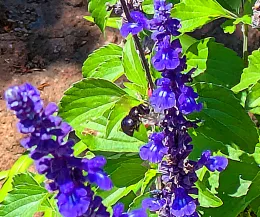
1. Salvias – for example: Salvia leucantha ‘Mexican Bush Sage’
A California native, these aromatic plants boast magenta to crimson blooms from spring to fall. Salvias are a large genus with many species that can tolerate partial shade making them ideal for woodland gardens.
Its flowers are a magnet for hummingbirds and pollinators (see Fig 2), while deer and gophers avoid it. Salvias typically have long flowering seasons and with proper pruning will continue to flower well into late fall and early winter. Salvias are a large group, many of which are widely available and in a wide range of colors and sizes.
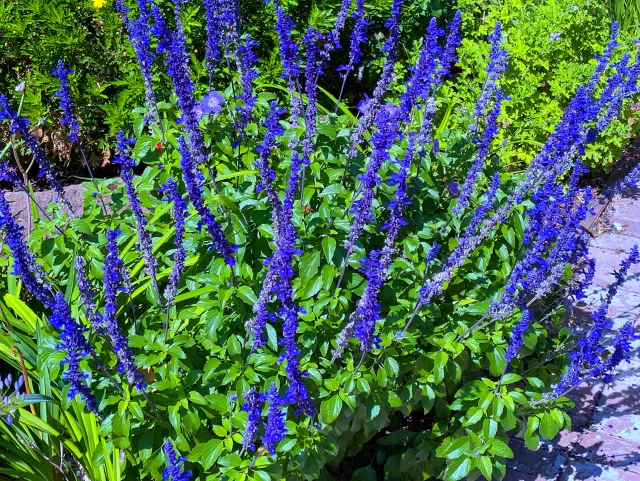
2. Yarrow – for example: Achillea millefolium ‘New Vintage Rose’ (Yarrow)
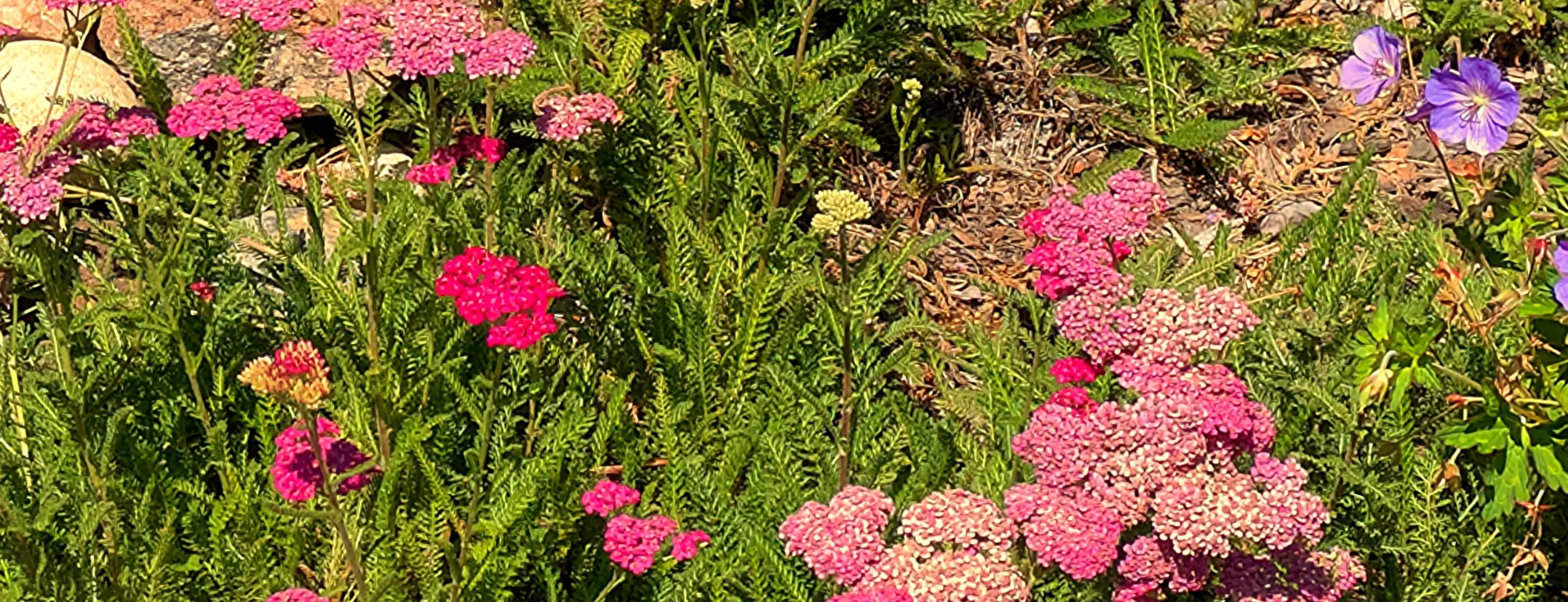
This drought-tolerant perennial features bright white, yellow, pink, red, orange, peach and terracotta shades depending on the variety. It's heat-tolerant, deer-resistant, and attracts beneficial insects like bees and butterflies. Yarrow is very hardy and will do fine in areas that get frost. Yarrow has feathery, fern-like leaves resembling fronds and are attractive in their own right adding texture to gardens.
3. Lavender – for example: Lavandula angustifolia 'Hidcote' (English Lavender)
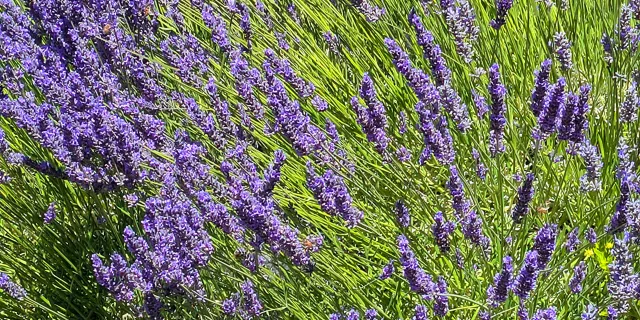
Known for its highly fragrant purple flowers, and compact shape 18”-24”, this lavender variety thrives in full sun and well-drained soil. It's drought-tolerant and attracts pollinators, making it both beautiful and beneficial. Lavender is often a favorite in many bay area gardens as the scent is popular and a favorite for indoor flower arrangements and potpourri.
4. Ceanothus – for example: Ceanothus griseus horizontalis ‘carmel creeper’
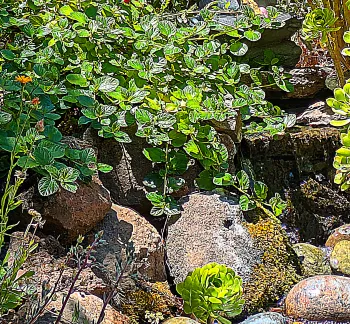
Ceanothus, also known as California Lilac, is a genus of flowering groundcovers, shrubs and small trees. It's prized for its bright, and dark green foliage, and dense clusters of pale blue flowers in spring and summer. It's a California native, and California has the highest diversity of this plant.
It's drought-tolerant, deer-resistant, and thrives in part shade, making it versatile for various garden spots. Ceanothus prefers infrequent deep watering. Ceanothus is a fast grower, and some varieties grow up to 3-4’ per year and great for filling in bare areas of the garden or growing over rocks and garden walls.
Ceanothus boasts a diverse range of varieties (besides the one mentioned above), with many offering stunning blue, purple or white flowers often in dense clusters with evergreen foliage.
5. Monkeyflowers
Monkeyflower is a herbaceous perennial California native. It is an attractive plant which bears red or orange-red tubular flowers and toothed, downy leaves. It can be erect or sprawling reaching 1-3 feet in height and width. It is desired for its color and ability to attract beneficials including hummingbirds and is prevalent in Bay Area gardens.
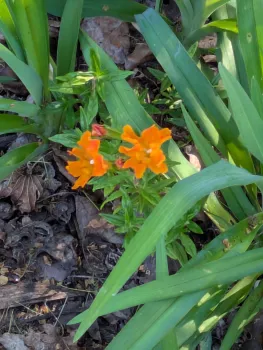
6. Lantanas
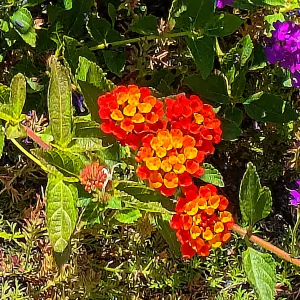
These vibrant, heat-loving perennials bloom from spring through fall, attracting butterflies and hummingbirds. They thrive in full sun and are drought-tolerant once established. Lantana flowers come in a wide range of vibrant colors, including yellow, orange, red, pink, purple, and white. Some varieties even display multiple colors within the same flower cluster, creating a striking multi-colored effect as the flowers mature. Tolerance to frost can be dependent on the variety but many varieties will survive seasons of frost year after year. Note that the unripe berries of Lantana are toxic which should be considered if children and pets roam the area.
7. African Iris or Fortnight Lily – for example: Dietes iridioides
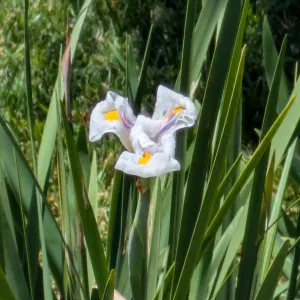
With its attractive iris-like flowers resembling Japanese lilies and sword-shaped leaves, this perennial blooms intermittently throughout the year. It's adaptable to various light and soil conditions and is drought-tolerant. Fortnight Lilies are in the Iris family in spite of the common name. Fortnight Lilies are a rhizomatous perennial that overtime can form clumps. Rhizomes are horizontal underground roots that grow new shoots as it spreads. Fortnight Lilies are popular plants for adding accent to gardens and along walkways. In milder Alameda County climates they can produce flowers well into winter.
8. Coreopsis – for example: Coreopsis grandiflora ‘sunkiss’
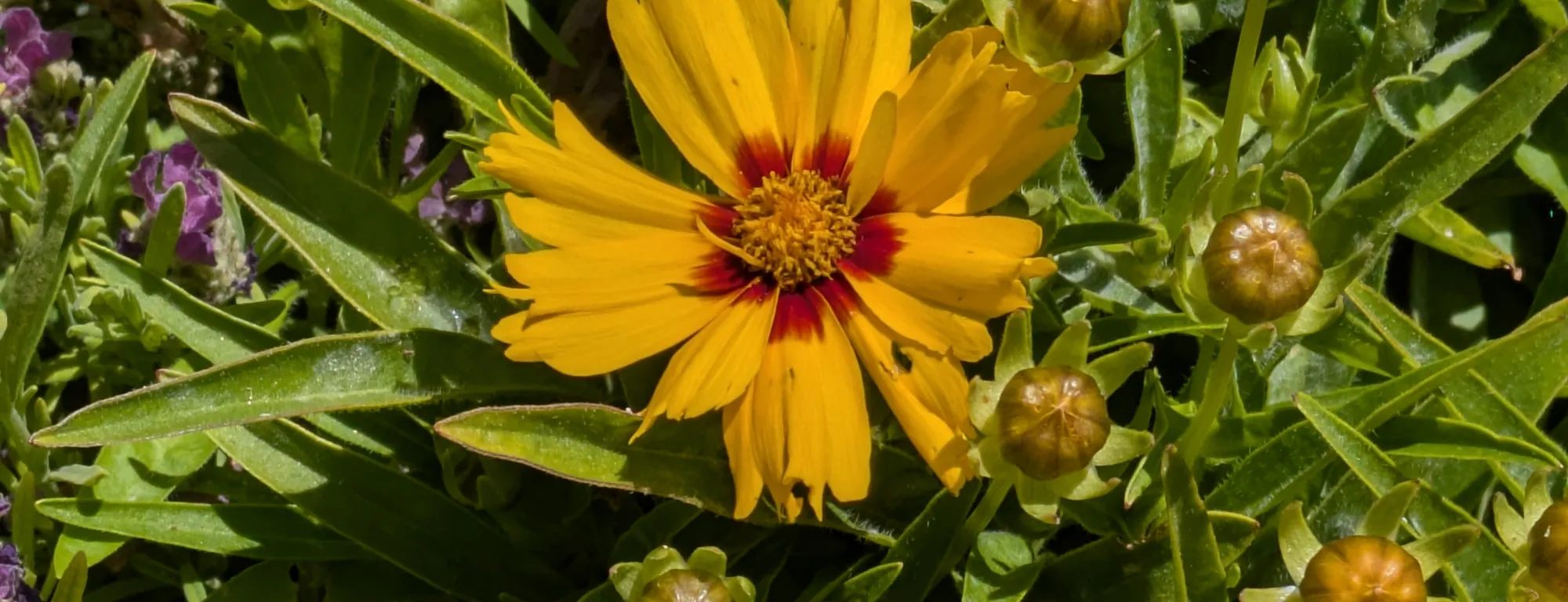
This perennial offers soft yellow, daisy-like flowers from spring to fall. The flowers are usually yellow with a toothed tip but can also be yellow-and-red bi-color or pink. The bi-color Coreopsis are particularly showy and a nice centerpiece for a garden. It's drought-tolerant, attracts pollinators, and adds a cheerful touch to borders and beds. A heavy bloomer, the flowers offer bright color and movement in bay area breezes. Some Coreopsis such as Coreopsis verticillata, are a rhizomatous perennial which typically grows in dense, bushy clumps to 1-3' tall. Other varieties are not rhizomatous and spread by dropping seeds.
9. Heucheras (coral bells)
Known for their colorful foliage ranging from deep purple to lime green, these perennials thrive in part shade and add year-round interest. Known as coral bells for delicate bell shaped flowers that attract pollinators. If you want to add bold, colorful foliage to your garden, Heuchera might be a perfect choice. They make a wonderful addition to the garden and can be used as edgings in perennial borders and group plantings. The lighter-colored varieties stand out nicely in a lightly shaded garden.
10. Cranesbill Geraniums ‘Rozanne’ (Hardy Geraniums)
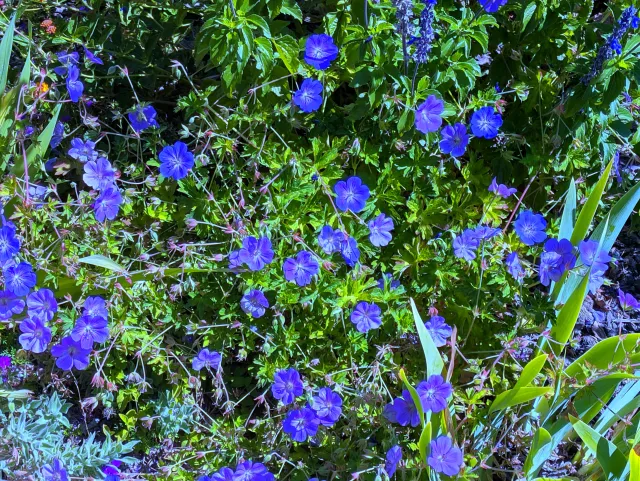
If you're looking for a fuss-free perennial that brings color, texture, and pollinators to your garden, cranesbill geraniums might be your new favorite plant. Not to be confused with the flashy, tender pelargoniums often seen in window boxes, true geraniums—commonly known as cranesbills—are hardy, low-maintenance perennials with a very long flowering season extending into the early Winter months.
Cranesbill geraniums get their name from the beak-like shape of their seed pods, which resemble a crane’s bill. Native to various parts of Europe, North America, and Asia, these plants thrive in a wide range of garden settings, from sunny borders to woodland edges.
They form low, spreading clumps of deeply lobed, often aromatic foliage and bloom in a variety of colors—shades of purple, pink, blue, and white. A personal favorite is the variety “Rozanne” a popular perennial groundcover and bedding plant that offers a very long-lasting bloom season and widely available in local nurseries. It features violet-blue flowers and deep green, slightly marbled foliage, especially desirable for border areas.
Don’t Forget the Grasses:
11. Fescue – for example: Festuca californica (California Fescue)
This native bunchgrass offers blue-green foliage and is excellent for erosion control. It prefers part shade and is often used under oaks or in naturalistic plantings. California Fescue lies in the middle of many desirable characteristics for grasses including disease resistance, recovery from wear, shade tolerance, and drought tolerance. This makes it ideal for use in a wide variety of situations and conditions in both flatlands and slopes.
🌸 Garden Design Tips
- Embrace Native Plants: Utilizing California natives like Salvia spathacea and Ceanothus not only ensures adaptability but also supports local ecosystems. Salvias, in particular, can be heavy pollinator attractors and it’s not unusual to see high activity in Spring and Summer.
- Consider Microclimates: The Bay Area's varied microclimates mean that a plant thriving in one neighborhood might struggle in another. Observe your garden's sun, shade, and wind patterns to select appropriate plants. A very useful and practical tip is to take a walk around your neighborhood and see what plants people are having great success growing.
- Group by Water Needs: Planting species with similar irrigation requirements together can conserve water, simplify maintenance and help keep your plants healthy. This is very important as drought tolerant plants like Salvias and Ceanothus can be harmed by providing the amount of water that typical annuals and many perennials require. Grouping plants by water needs will assure that the drought tolerant plants get just the amount of water they need, and no more, to thrive.
- Incorporate Year-Round Interest: Mix evergreen foliage, seasonal bloomers, and ornamental grasses to ensure your garden remains attractive throughout the year. In the Winter months plants with interesting leaves and textures such as yarrow and cranesbill geraniums can add interest to a garden even when they lack all the Spring colors.
🌿 Final Thoughts
Creating a thriving perennial garden in the Bay Area is both rewarding and environmentally beneficial. By selecting plants suited to the local climate and conditions, you can enjoy a vibrant, low-maintenance landscape that supports local wildlife and conserves resources and avoids some of the intensive clean up and replanting that is required for Annuals.
Happy gardening! 🌼🌿
Resources:
Outstanding Plants of Alameda County
More Outstanding Plants of Alameda County (PDF)
Alameda County Water District Resource List
Want to learn more?
This blog post is brought to you by the Help Desk of the UC Master Gardeners of Alameda County. Subscribe to our blog!
Have a gardening question? We'll help.
Visit our Help Desk page to submit your question and see additional ways you can reach us.
